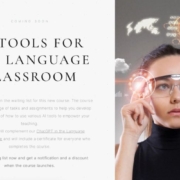Why Teachers Need to Remain Students
This year, I have participated in several Continuing Professional Development (CPD) courses. While these courses have been beneficial in numerous ways—such as networking with other teachers, acquiring new strategies, and boosting my confidence—the most significant benefit has been experiencing the classroom from a student’s perspective.
Key Reflections from a Student’s Perspective
Engaging in CPD courses has prompted me to critically evaluate my own teaching methods. Here are some essential questions that arose:
- Do I give students enough time to think before answering my questions?
- Are my instructions clear, and do I effectively check for understanding?
- Do I allocate sufficient time for student discussions?
- Is my feedback timely and constructive?
- Do I recognize the challenges students face in balancing study and life?
Although these questions may seem basic, I found that nearly all of the courses, even those led by very experienced teachers, often fell short in these areas.
Bridging Theory and Practice
While we may understand the necessity of certain teaching practices, experiencing these needs firsthand as students highlights the gap between theory and implementation. It is one thing to include clear instructions and timely feedback in a lesson plan and quite another to experience the frustration of muddled instructions and long wait times for feedback.
Practical Steps for Improvement
I have become much more aware of the need to:
-
Pause for Thought: After posing a question, allow students a moment to think before expecting an answer. This pause is crucial for thoughtful responses and student confidence.
-
Clear Instructions: Simplify instructions and break tasks into manageable steps. Ensure students understand by having them paraphrase the instructions.
-
Facilitate Discussions: Without clear instructions, there will always be awkward & wasted minutes in small group discussions as students work out who is going to speak first. This is if everyone understands what they are to discuss in the first place.
-
Timely Feedback: Provide feedback as promptly as possible. If a student has put in time and effort creating work, they should be able to expect equal time and effort from the teacher in response. If you have too much to mark, perhaps you need to rethink the amount of assessed work you are setting.
-
Empathy and Flexibility: Acknowledge the external pressures students face and offer flexibility where feasible to support their learning.
The Importance of Lifelong Learning
Remaining a student is not solely about professional development; it helps us better understand the experiences of our students and continually improve our teaching methods.
All teachers should be students often, whether through CPD courses, workshops, or observing colleagues. By doing so, we can gain valuable insights, enhance our teaching practices, and ultimately provide a better learning experience for our students.










